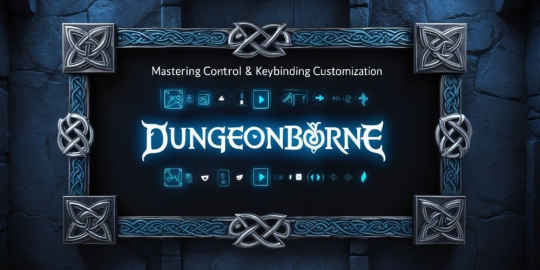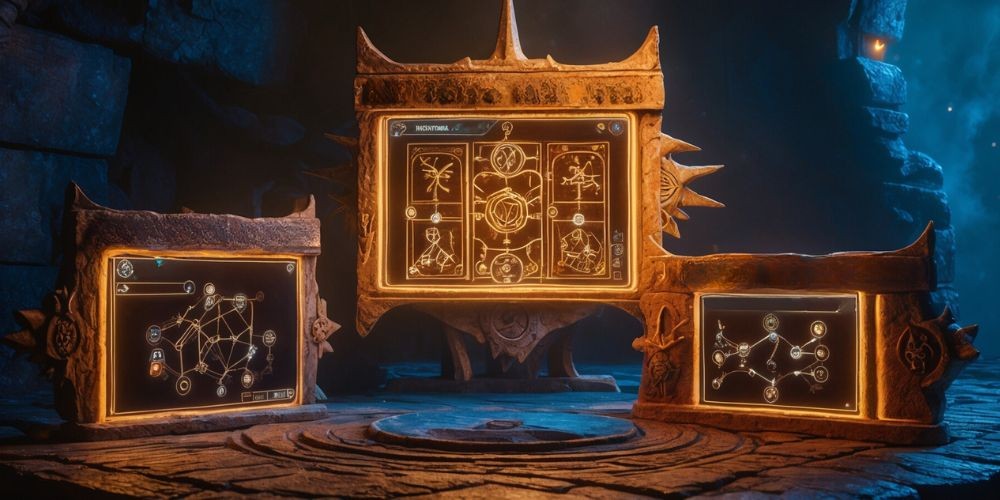
If you're stepping into the immersive, soul-challenging world of Dungeonborne, it’s crucial to have complete control over your actions. The default keybindings might not always align with your preferred gameplay style. Luckily, Dungeonborne allows you to customize your controls for a more fluid and intuitive gaming experience.
1. Understand the Initial Constraints
Dungeonborne introduces you to its mechanics through an optional tutorial. Here, you'll learn essential skills like attacking, using shields, executing special abilities, and consuming healing items. However, be aware that the tutorial session has limitations — most notably, it does not allow you to change your controls during this phase. Therefore, your first step is to either complete or opt to skip the tutorial to proceed with key rebinding.

2. Accessing the Settings from the Campsite
Once you have reached the campsite — your primary hub in the game — open the menu screen. This can be done by pressing the Escape key or by clicking on the compass-like icon in the upper left corner of the screen. The decision to set the control customization options in the campsite is intentional, allowing you to familiarize yourself with the default settings before making any changes.
3. Navigating to Mouse and Keyboard Settings
In the menu screen, head to Settings. You will find multiple tabs here, but your focus should be on the one labeled Mouse and Keyboard. Select it to explore an array of options designed to let you tweak your gameplay experience. Here, you can adjust sensitivity settings, enable or disable custom key bindings, and remap controls to better suit your style.
4. Customizing Key Bindings
The Mouse and Keyboard tab provides a comprehensive list of default actions and their corresponding key assignments. To change a specific key binding, follow these steps:

- Select the action you wish to remap.
- Click on the key next to the action, which will highlight it.
- Press the new key you want to assign to that action.
Repeat this process for all the controls you wish to modify.
5. Saving and Testing Your New Settings
After customizing your key bindings, it’s essential to save your settings. Most importantly, return to the actual gameplay to test these new controls. Head into a dungeon, engage with enemies and practice your new key bindings. This practice will help you to determine if your new setup enhances your gameplay or if further adjustments are needed.

6. Advanced Customization: Editing the Config File
If you are comfortable with more advanced customization, you can directly edit Dungeonborne’s config file. This file stores all your settings and can be found at:
C:\Users\Your-User-Name\AppData\Local\Dungeonborne\Saved\Config\Windows
Open this file using a text editor such as Notepad or Notepad++. Here, you can make precise adjustments to your keybindings and other settings. Make sure to back up the original config file before making any changes.
7. Common Issues and How to Resolve Them
While customizing your controls, you might encounter a few challenges. For example, the F1 key is hard-coded to pull up your character list, which can be problematic for Nvidia users due to its overlap with the screenshot key in Nvidia GeForce Experience. To resolve this, you can either:

- Change the screenshot key in Nvidia GeForce Experience.
- Simply put up with taking a screenshot whenever you press
F1until this issue is patched in a future update.
8. Controller Support: A Workaround
Dungeonborne does not officially support controllers, which could be a drawback for some players. However, if you prefer using a controller, you can create a workaround by mapping keyboard controls to your controller through Steam:
- Open Steam and go to your Library.
- Right-click Dungeonborne and select Properties.
- In the Controller tab, choose Controller Configuration to map your desired keys to the controller buttons.
Be aware that this method may not work seamlessly due to inherent limitations, but it is worth experimenting with if you want to use a controller.
9. Experimenting with Different Configurations

Different gaming scenarios might require unique key configurations. Don’t hesitate to revisit and tweak your controls as you explore different classes, weapons, skills, and environments. Keeping your key bindings versatile ensures that you are always prepared and comfortable, no matter the challenge ahead.
10. Keeping Your Gameplay Smooth and Efficient
Having finely tuned control settings can significantly enhance your Dungeonborne experience. By following the steps outlined in this guidance, you can ensure that your controls are tailored to your preferences, enabling you to focus on the intricacies of combat, exploration, and loot collection. Happy dungeon crawling!
If you have any questions or run into issues, don't hesitate to consult the game's community forums or seek further assistance from technical support. Your enhanced, personalized gaming experience awaits!